Difference between spondylosis and spondylolysis. Spondylosis vs Spondylolysis: Understanding Key Differences in Spinal Conditions
What are the main differences between spondylosis and spondylolysis. How do these spinal conditions affect the vertebrae and surrounding tissues. What are the common symptoms and treatment options for spondylosis and spondylolysis. How can patients manage pain and improve quality of life with these spinal disorders.
Defining Spondylosis: Age-Related Spinal Degeneration
Spondylosis refers to degenerative osteoarthritis of the spine, typically occurring as part of the natural aging process. This condition involves the narrowing of space between adjacent vertebrae, most commonly affecting the facet joints or intervertebral discs.
Key characteristics of spondylosis include:
- Progressive wear and tear of spinal structures
- Narrowing of intervertebral spaces
- Development of bone spurs (osteophytes)
- Degeneration of facet joints and/or intervertebral discs
Spondylosis can occur in any region of the spine but is most prevalent in the cervical (neck) and lumbar (lower back) areas. As the condition progresses, it may lead to compression of nerve roots, potentially causing radiculopathy – a set of symptoms including pain, weakness, and sensory disturbances in the affected area.

Common Causes of Spondylosis
While aging is the primary factor in the development of spondylosis, several other contributors can accelerate or exacerbate the condition:
- Repetitive stress on the spine
- Poor posture
- Obesity
- Genetic predisposition
- Previous spinal injuries
Understanding these risk factors can help individuals take preventive measures to slow the progression of spinal degeneration.
Spondylolysis: Stress Fractures in the Vertebrae
Spondylolysis is distinct from spondylosis, involving a defect in the pars interarticularis – a small, thin portion of the vertebral arch. This condition is typically characterized by a stress fracture in the affected vertebra, most commonly occurring in the lumbar spine.
Unlike spondylosis, which is primarily age-related, spondylolysis often results from repetitive trauma to the spine. It is particularly common among athletes engaged in sports that place significant stress on the lower back, such as:
- Gymnastics
- Football
- Weightlifting
- Cricket (especially fast bowlers)
- Dancing
Spondylolysis can also be linked to certain inherited spinal anatomies, such as an increased size and shape of the L4 superior articular process, which may predispose individuals to this condition.

Progression from Spondylolysis to Spondylolisthesis
In some cases, spondylolysis can progress to a more severe condition known as spondylolisthesis. This occurs when the stress fracture weakens the vertebra to the point where it slips forward relative to the vertebra below it. Isthmic spondylolisthesis, which develops from spondylolysis, is the most common form of this condition, with a reported prevalence of 5-7 percent in the US population.
Comparing Symptoms: Spondylosis vs Spondylolysis
While both spondylosis and spondylolysis can cause back pain, the nature and presentation of symptoms can differ:
Spondylosis Symptoms
- Gradual onset of pain and stiffness
- Pain that may worsen with activity and improve with rest
- Potential radiating pain or numbness if nerve roots are compressed
- Morning stiffness that improves with movement
- Reduced range of motion in the affected area
Spondylolysis Symptoms
- Lower back pain that may be exacerbated by physical activity
- Pain that often worsens with extension of the spine
- Tightness in the hamstrings
- Potential for sciatica-like symptoms if nerve compression occurs
- In some cases, no symptoms may be present
It’s important to note that the severity of symptoms doesn’t always correlate with the extent of the condition visible on imaging studies. Some individuals with significant degeneration or defects may experience minimal symptoms, while others with milder structural changes may have more pronounced pain.

Diagnostic Approaches for Spinal Conditions
Accurate diagnosis of spondylosis and spondylolysis is crucial for determining the appropriate treatment plan. Healthcare providers typically employ a combination of methods to identify and differentiate these conditions:
Medical History and Physical Examination
The diagnostic process often begins with a thorough review of the patient’s medical history and a physical examination. The healthcare provider will inquire about the nature and duration of symptoms, any precipitating factors, and the impact on daily activities. During the physical exam, they will assess:
- Range of motion in the spine
- Presence of muscle spasms or tenderness
- Neurological function, including reflexes and sensation
- Gait and posture
Imaging Studies
Various imaging techniques can be employed to visualize the spine and identify structural abnormalities:
- X-rays: Useful for detecting bone spurs, narrowed disc spaces, and potential vertebral slippage
- MRI (Magnetic Resonance Imaging): Provides detailed images of soft tissues, including intervertebral discs and nerve roots
- CT (Computed Tomography) scan: Offers cross-sectional images that can help identify fractures in spondylolysis
- Bone scan: May be used to detect active stress fractures in cases of suspected spondylolysis
In some cases, additional diagnostic procedures such as nerve conduction studies or electromyography (EMG) may be performed to assess nerve function and identify any compression or irritation.

Treatment Strategies: Conservative Approaches
For both spondylosis and spondylolysis, initial treatment typically focuses on conservative, non-invasive approaches aimed at managing pain, improving function, and preventing further progression of the condition.
Physical Therapy and Exercise
A cornerstone of treatment for spinal conditions, physical therapy can help strengthen the muscles supporting the spine, improve flexibility, and enhance overall posture and body mechanics. Specific exercises may include:
- Core strengthening exercises
- Stretching routines for the back and hamstrings
- Low-impact aerobic activities like swimming or cycling
- Yoga or Pilates, when appropriate and under guidance
Medications
Various medications may be prescribed or recommended to manage pain and inflammation associated with spondylosis and spondylolysis:
- Nonsteroidal anti-inflammatory drugs (NSAIDs)
- Acetaminophen for pain relief
- Muscle relaxants for acute muscle spasms
- In some cases, short-term use of oral corticosteroids
Lifestyle Modifications
Implementing certain lifestyle changes can significantly impact the management of spinal conditions:
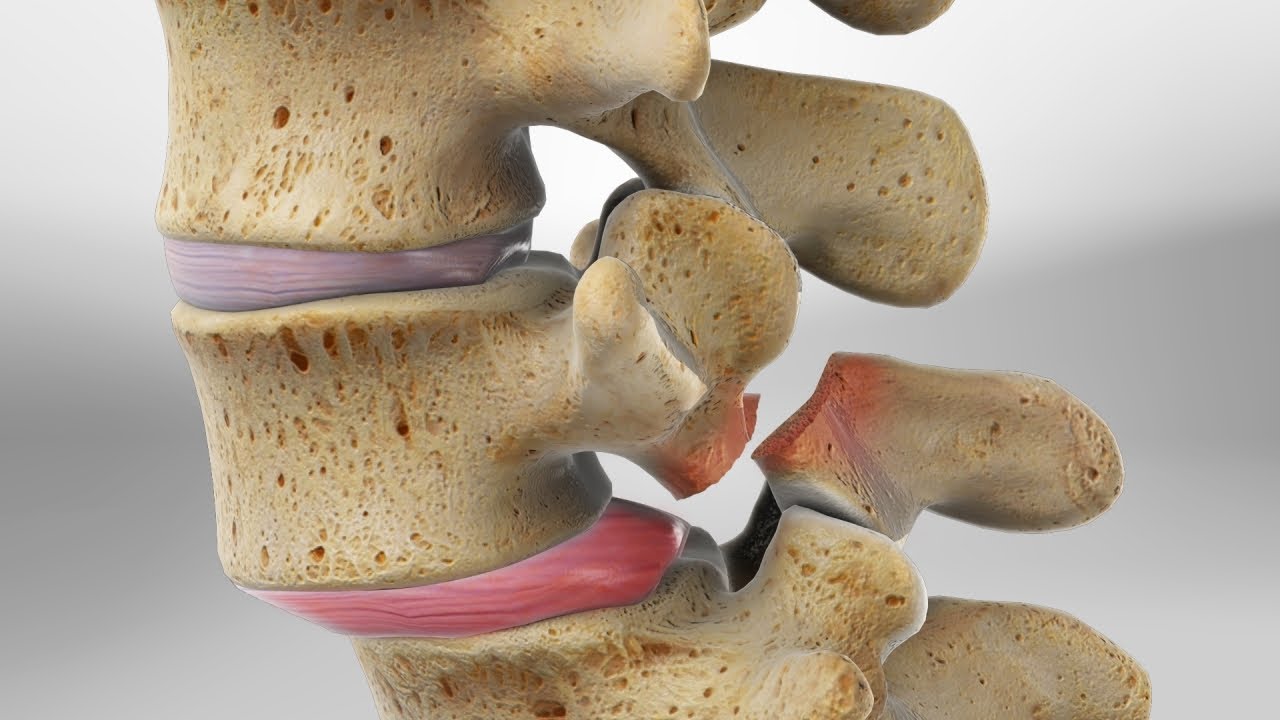
- Weight management to reduce stress on the spine
- Ergonomic adjustments at work and home
- Proper body mechanics for lifting and daily activities
- Smoking cessation to improve overall spine health
Advanced Treatment Options for Persistent Symptoms
When conservative measures fail to provide adequate relief, healthcare providers may consider more advanced treatment options:
Interventional Pain Management
Various minimally invasive procedures can be employed to target pain and inflammation:
- Epidural steroid injections
- Facet joint injections
- Radiofrequency ablation for nerve pain
- Nerve blocks
Regenerative Medicine
Emerging therapies in regenerative medicine show promise for treating spinal conditions:
- Platelet-rich plasma (PRP) therapy
- Stem cell treatments
While these treatments are still being studied, some patients report long-term success in managing low back pain with these approaches.
Surgical Interventions
In severe cases or when conservative treatments fail to provide relief, surgical options may be considered:

- Decompression surgery to relieve nerve pressure
- Spinal fusion for cases of severe spondylolisthesis
- Disc replacement surgery in select cases
It’s important to note that surgery is typically reserved for cases where conservative measures have been exhausted and the patient’s quality of life is significantly impacted.
Living with Spinal Conditions: Long-Term Management Strategies
Managing spondylosis and spondylolysis often requires a long-term approach focused on maintaining spine health and preventing exacerbations. Key strategies for ongoing management include:
Regular Exercise and Physical Activity
Maintaining a consistent exercise routine is crucial for supporting spine health:
- Low-impact cardiovascular activities to promote overall fitness
- Core-strengthening exercises to support the spine
- Flexibility and stretching routines to maintain range of motion
- Aquatic exercises, which can be particularly beneficial due to reduced stress on the spine
Ergonomic Considerations
Optimizing your environment to support good posture and reduce strain on the spine is essential:
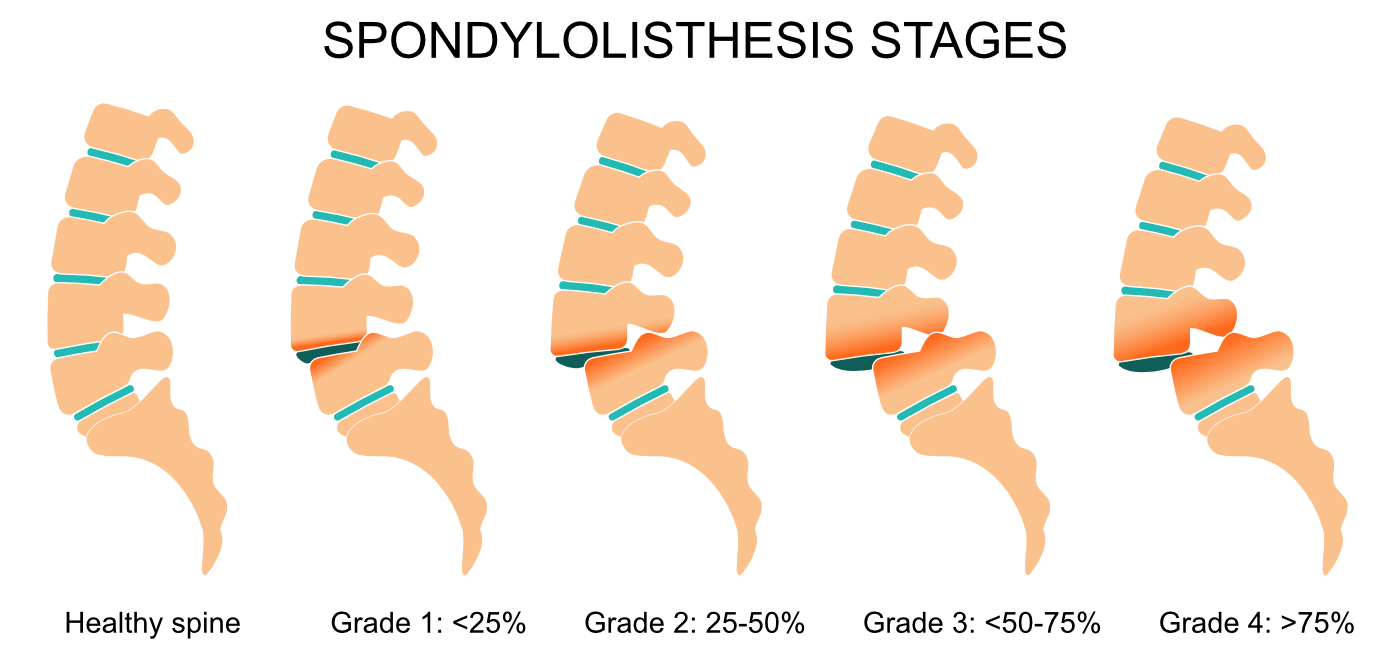
- Use of ergonomic chairs and workstations
- Proper sleeping surfaces and pillows
- Regular posture checks and adjustments throughout the day
- Use of assistive devices when necessary for lifting or reaching
Stress Management and Mental Health
Chronic pain conditions can take a toll on mental health, and stress can exacerbate physical symptoms. Incorporating stress-reduction techniques can be beneficial:
- Mindfulness meditation
- Progressive muscle relaxation
- Cognitive-behavioral therapy for pain management
- Joining support groups or seeking counseling
Nutrition and Weight Management
Maintaining a healthy weight and focusing on nutrition can significantly impact spine health:
- Anti-inflammatory diet rich in fruits, vegetables, and omega-3 fatty acids
- Adequate calcium and vitamin D intake for bone health
- Hydration to maintain disc health
- Weight management to reduce stress on the spine
By implementing these long-term management strategies, individuals with spondylosis or spondylolysis can often maintain an active lifestyle and minimize the impact of their condition on daily activities.

Preventive Measures and Future Outlook
While some factors contributing to spondylosis and spondylolysis may be beyond an individual’s control, there are preventive measures that can be taken to reduce the risk or slow the progression of these conditions:
Early Intervention and Education
Recognizing early signs of spinal issues and seeking prompt medical attention can lead to better outcomes. Education about proper body mechanics, especially for individuals in high-risk occupations or sports, is crucial for prevention.
Regular Check-ups and Screenings
Periodic spine health assessments, particularly for those with risk factors or a family history of spinal conditions, can help identify issues before they become severe.
Advances in Treatment and Research
Ongoing research in spine health continues to yield promising developments:
- Improved imaging techniques for earlier and more accurate diagnosis
- Advancements in minimally invasive surgical procedures
- Development of novel biological therapies for spine regeneration
- Enhanced understanding of the genetic factors influencing spinal conditions
As our understanding of spinal conditions evolves, so too do the treatment options and preventive strategies available to patients. While spondylosis and spondylolysis can present significant challenges, a proactive approach to spine health, combined with ongoing medical advancements, offers hope for improved outcomes and quality of life for those affected by these conditions.

Back Pain: Spondylosis, Spondylolysis, and Spondylolisthesis
Have you read your MRI report recently and ended up more confused about your low back pain than before you began? If so, you are not alone. The medical terms for low back problems confuse many medical professionals who don’t deal with these issues on a regular basis. The purpose of this post is to help explain what is going on with your back, so that you can make a more informed decision on which treatments to choose.
The 3 main terms we are going to discuss are spondylosis, spondylolysis, and spondylolisthesis. Each is defined below and a general discussion of treatment options follows.
Spondylosis refers to degenerative osteoarthritis of the spine – essentially the space between adjacent spinal vertebrae narrows. Because this condition commonly occurs in the zygapophysial (facet) joints or the intervertebral discs, it is often referred to as facet syndrome or degenerative disc disease.
Spondylolysis is a defect of a vertebra in the pars interarticularis – most typically a stress fracture that is caused by repetitive trauma done to the lumbar spine from strenuous sports such as football, weightlifting, cheerleading, or gymnastics. Spondylolysis is also linked to certain inherited spinal anatomy (increased size and shape of the L4 superior articular process).
Spondylolisthesis is the displacement of a vertebra, most commonly occurring after a break or fracture. There are 2 common forms of spondylolisthesis.
Isthmic (spondylolytic) spondylolisthesis is the most common form, with a reported prevalence of 5–7 percent in the US population. It usually progresses from spondylolysis over time.
Degenerative spondylolisthesis develops as a long-term result of progressive spondylosis. Facet arthritis and ligamentum flavum weakness may result in slippage of a vertebrae. Degenerative forms are more likely to occur in women, persons older than fifty, and African-Americans.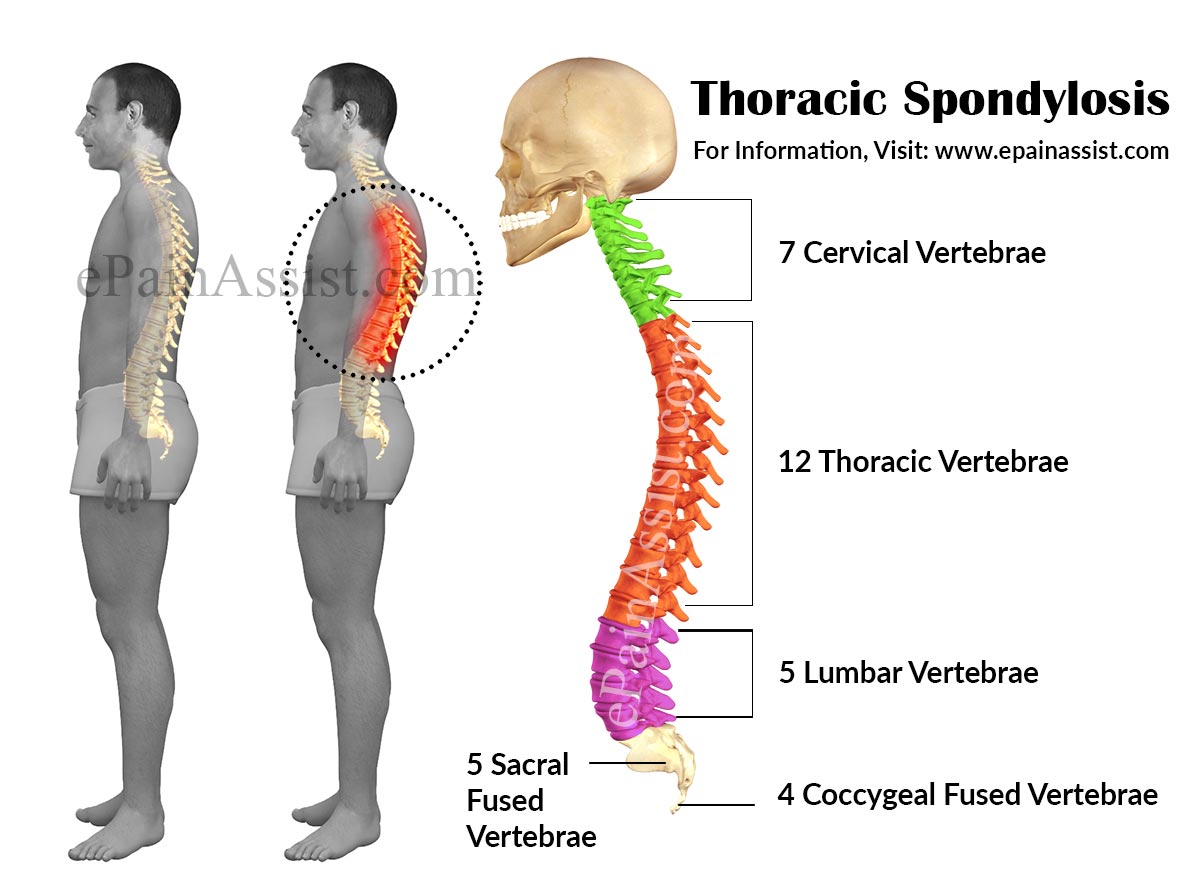
Symptoms:
Spondylosis, spondylolysis, or spondylolisthesis can cause stiffness and pain in the spine (lower back pain or neck pain), however, when severe, the narrowing may cause pressure or compression of the nerve roots. Compression of a nerve root emerging from the spinal cord may result in radiculopathy (sensory disturbances, such as severe pain, weakness, or tingling in the neck, shoulder, arm, back, and/or leg, possibly accompanied by muscle weakness).
Treatments:
Treatment begins with conservative therapy including: physical therapy (including yoga and pilates), anti-inflammatory medications, epidural steroid injections, facet joint injections, radiofrequency ablation, massage therapy, acupuncture, and chiropractic care. Often a back brace will help patients, especially those with spondylolisthesis to perform certain activities with less pain.
If there is nerve root irritation or nerve root compression causing radiculopathy that is not improved with conservative care, decompression surgery may be very effective in relieving the pain.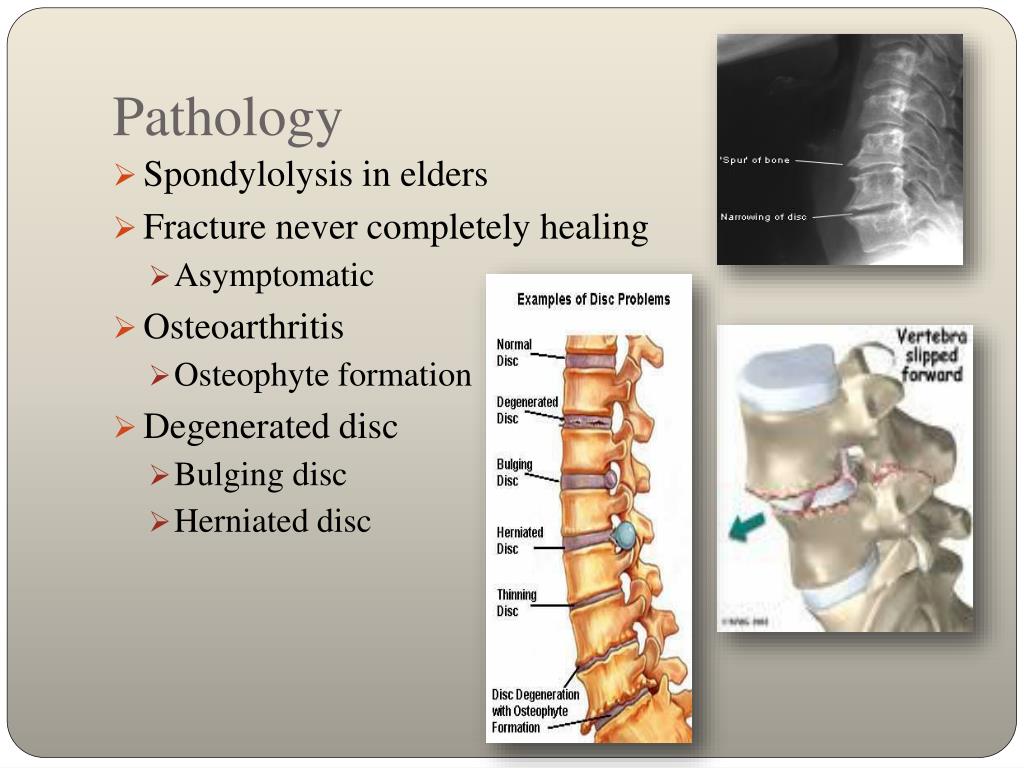 Fusion surgery is a poor option for the treatment of spondylosis, but may be considered for severe cases of spondylolisthesis.
Fusion surgery is a poor option for the treatment of spondylosis, but may be considered for severe cases of spondylolisthesis.
Regenerative medicine has recently emerged for spondylosis and spondylolysis. There are several reports of long-term successful treatment of low back pain with both PRP (platelet rich plasma) therapy or stem cell treatments.
For those interested, I have included a video with some excellent exercises for low back pain.
Recent Posts
Share this Post
Defining Spondylosis, Spondylitis, & Spondylolisthesis
When dealing with lower back spinal issues, the terminology can be confusing. While some think certain terms are interchangeable, they actually describe different types of conditions that need unique care. Do you want to learn more about a recent “spondy” diagnosis related to your lower back pain? This guide will help you understand the differences among these conditions.
Do you want to learn more about a recent “spondy” diagnosis related to your lower back pain? This guide will help you understand the differences among these conditions.
So what do these words mean? Each starts with the prefix “spondy”. This refers to the vertebral or spinal column. If you were diagnosed with any of these conditions, something in your spine is abnormal. This may worry you. After all, the spine is a very important part of your body. Don’t fret, some of these conditions can be treated conservatively. Surgery may be an option for more advanced cases. While a little scary, it may be the answer to finally enjoy the life you want to live.
Let’s take a look at the 3 “Spondy” conditions.
Spondylosis
Spondylosis can affect any region of the spine. It is most common in the neck and lower back. It involves a defect in the pars interarticularis–a piece of bone attaching the facet joints at the back of the spine. This condition is a form of spinal degeneration occurring due to the natural effects of aging. As we grow older, normal wear and tear, as well as cellular changes, affect the structure of the spine. As a result, the soft tissues supporting the spine–discs, muscles, tendons, etc.–slowly begin to deteriorate.
As we grow older, normal wear and tear, as well as cellular changes, affect the structure of the spine. As a result, the soft tissues supporting the spine–discs, muscles, tendons, etc.–slowly begin to deteriorate.
For example, the discs protecting the spine tend to dry out and lose shape as we age. This condition, known as degenerative disc disease, puts pressure on the discs and may cause a bulging or herniated disc. When the soft gel-like layer of the inner disc breaks through the thick fibrous tissue of the outer disc, it often affects spinal joints and can compress nerves. In addition, cartilage can wear away from the joints leading to facet joint osteoarthritis.
Spondylosis, however, doesn’t only affect older people. In fact, adolescents may develop the condition. Those participating in sports requiring repeated hyperextension of the lower back are at risk. This includes gymnastics, rowing, wrestling, and track & field sports. Younger people may not have many symptoms, so the condition may not get diagnosed. It spondylosis isn’t identified and managed correctly, however, it can result in more serious problems.
It spondylosis isn’t identified and managed correctly, however, it can result in more serious problems.
Diagnosing and Treating Spondylolysis
Young athletes and older adults suffering from lower back pain may want to get checked for spondylosis. One effective diagnostic test is the one-legged hyperextension maneuver. While standing in a certain one-legged position, the lumbar spine gets stretched out. If this position causes pain it may indicate this condition. Also, X-rays, a bone scan, or MRI can help with diagnosis.
Treating spondylosis often involves conservative treatments like back braces, pain medications, and stretching exercises. If these treatments aren’t effective, surgery may be an option. Spinal decompression surgery or spinal fusion surgery can help relieve pressure on the affected area and provide much-needed stabilization.
Spondylolisthesis
When spondylosis is left untreated, it may lead to spondylolisthesis. Spondylosis involves the separation of the pars interarticularis. In contrast, spondylolisthesis is defined by a slipped vertebra. When one bone of the spine slips forward over another, it causes damage to the spinal structure. In some cases, a stress fracture may be to blame. Other times, damage to the intervertebral discs may cause this instability of the spine.
In contrast, spondylolisthesis is defined by a slipped vertebra. When one bone of the spine slips forward over another, it causes damage to the spinal structure. In some cases, a stress fracture may be to blame. Other times, damage to the intervertebral discs may cause this instability of the spine.
Family history and even congenital defects can contribute to this condition. It is often the result of certain sports and physical occupations. The lower back is responsible for carrying a lot of the body’s weight. Some activities make the spine more prone to developing spondylolisthesis. For example, gymnasts, football players, and weightlifters of all ages can develop this condition. Those that work in warehouses or delivering packages are also susceptible since they may bear a lot of weight on one side of the body and do a lot of bending. In addition, age-related degeneration of the spinal structures plays a role.
Some people don’t even know they have spondylolisthesis. They may discover it while getting an X-ray for an unrelated problem. Others experience low back pain, leg pain, swayback, or a protruding stomach.
Others experience low back pain, leg pain, swayback, or a protruding stomach.
Diagnosing and Treating Spondylolisthesis
If an X-ray suggests spondylolisthesis, your doctor may perform other tests or diagnostic imaging to get a better look at the problem. For example, your doctor may ask you to bend certain ways during an X-ray to see if your vertebrae are moving or unstable. A CT scan or myelogram can also determine if nerves are affected.
During a physical exam, your doctor views your posture, range of motion, and overall physical condition. In addition, the doctor will test your reflexes as well as feeling for muscle spasms and abnormal curves in your spine.
Treating this condition often starts with conservative measures. Pain and anti-inflammatory medications may prove helpful. In addition, consulting with a physical therapist or chiropractor can help reduce pain and increase mobility by using exercises or manual manipulation. A back brace may also be useful in stabilizing the area. Some people also find relief with epidural steroid injections. Your doctor injects this combination of steroids and pain medications into the affected area reducing inflammation and discomfort.
Some people also find relief with epidural steroid injections. Your doctor injects this combination of steroids and pain medications into the affected area reducing inflammation and discomfort.
If you suffer from severe pain or haven’t responded to conservative treatments, surgery may be the next option. Spinal fusion surgery can be an effective treatment. Since it is a significant surgery, recovery times may be longer than other orthopedic procedures. By stabilizing the spine, however, it can prevent further structural damage and restore function and mobility. Depending on your condition and the surgeon’s preference, a lumbar interbody fusion can be done through the front of your body (ALIF), back (PLIF), or a combination (TLIF).
Spondylitis
Spinal conditions can also be due to arthritis. This condition, sometimes known as spondyloarthropathy, is a type of inflammatory rheumatic arthritis. Unlike other forms of arthritis, it affects areas where the ligaments and tendons attach to the bones. Though the exact cause is unknown, many people with the gene HLA B27 tend to develop the condition. In addition, some research suggests an infection can trigger this condition.
Though the exact cause is unknown, many people with the gene HLA B27 tend to develop the condition. In addition, some research suggests an infection can trigger this condition.
Spondylitis usually occurs in young adults between 17 and 35 years old. Symptoms include chronic pain and lower back stiffness that gets worse after resting for a long time. Many feel stiffness after waking in the morning or late at night. Over time, symptoms may reach other parts of the body. Stiffness and pain can extend to the upper spine and even the rib cage. In addition, inflammation can occur in the skin, eyes, and gastrointestinal tract.
There are many different types of arthritis that can affect the spine. For example, psoriatic arthritis is common with those who suffer from skin psoriasis. Also, reactive arthritis, occurs as a reaction to certain bacteria like Chlamydia. Another inflammatory condition, ankylosing spondylitis, may cause the vertebrae to fuse together.
Diagnosing and Treating Spondylitis
Your doctor or a rheumatologist can diagnose this condition. It usually involves a thorough physical exam including reviewing medical and family history. In addition, diagnostic imaging and blood work–testing for the gene HLA-B27–help to pinpoint this condition.
It usually involves a thorough physical exam including reviewing medical and family history. In addition, diagnostic imaging and blood work–testing for the gene HLA-B27–help to pinpoint this condition.
While there is no known cure for spondylitis, there are some ways to manage symptoms. For example, medications can help with pain and stiffness. Exercise and physical therapy is a great way to improve posture, increase flexibility, and decrease pain. Those with more severe cases of spondyloarthritis may benefit from surgery. When spinal structures are affected, a laminectomy or osteotomy can be beneficial. Also, severe damage may require a spinal fusion surgery where vertebrae grow together using a bone graft and other instrumentation.
Getting Help for Your Spinal Conditions
If your lower back pain is caused by issues of the spinal column and related structures, you want the best care during every step of treatment. After all, spine and spinal cord health are crucial to your everyday functioning. It’s best to choose trusted doctors with years of experience in treating spinal disorders.
It’s best to choose trusted doctors with years of experience in treating spinal disorders.
The Advanced Spine Center is ready to help. Our multidisciplinary team specializes in effective conservative treatments as well as the latest minimally invasive surgeries. Looking for award-winning, experienced doctors? We have you covered. With over six decades of combined experience as well as Top Doctor and Patient’s Choice awards, you have the comfort of knowing our team has successfully treated many spine conditions for years.
Don’t let lower back issues keep you from doing what you love. Call (973) 538-0900 to schedule a consultation and start your relationship with a caring team of professionals.
Spondylosis and Spondylolysis – Differences and Treatments
Understanding the main differences between the two spinal conditions and treatments that can help alleviate both conditions.
What is spondylosis
Spondylosis is a general term for spinal degeneration. Spondylosis usually develops in the upper part of the spine, called the cervical region. Spondylosis can be osteoarthritis of the spine or degenerative disc disease. Spinal osteoarthritis describes the wear and tear of the protective cartilage that surrounds the ends of the vertebrae. The ends of the vertebrae are called facet joints and are connections between the vertebrae that provide mobility to the spine. Wear of the cartilage of the facet joints leads to a decrease in the space between the vertebrae. This reduced space can put pressure on the spinal cord and spinal nerve roots, causing inflammation and pain.
Spondylosis usually develops in the upper part of the spine, called the cervical region. Spondylosis can be osteoarthritis of the spine or degenerative disc disease. Spinal osteoarthritis describes the wear and tear of the protective cartilage that surrounds the ends of the vertebrae. The ends of the vertebrae are called facet joints and are connections between the vertebrae that provide mobility to the spine. Wear of the cartilage of the facet joints leads to a decrease in the space between the vertebrae. This reduced space can put pressure on the spinal cord and spinal nerve roots, causing inflammation and pain.
This pain can range from mild to severe. Degenerative disc disease describes the wear and tear of the vertebral discs. The discs of the spine act as shock absorbers and provide structure to the spine. Degenerative disc disease can develop due to water loss or small cracks in the discs. Osteoarthritis and degenerative disc disease usually occur in old age due to the natural wear and tear of the spine.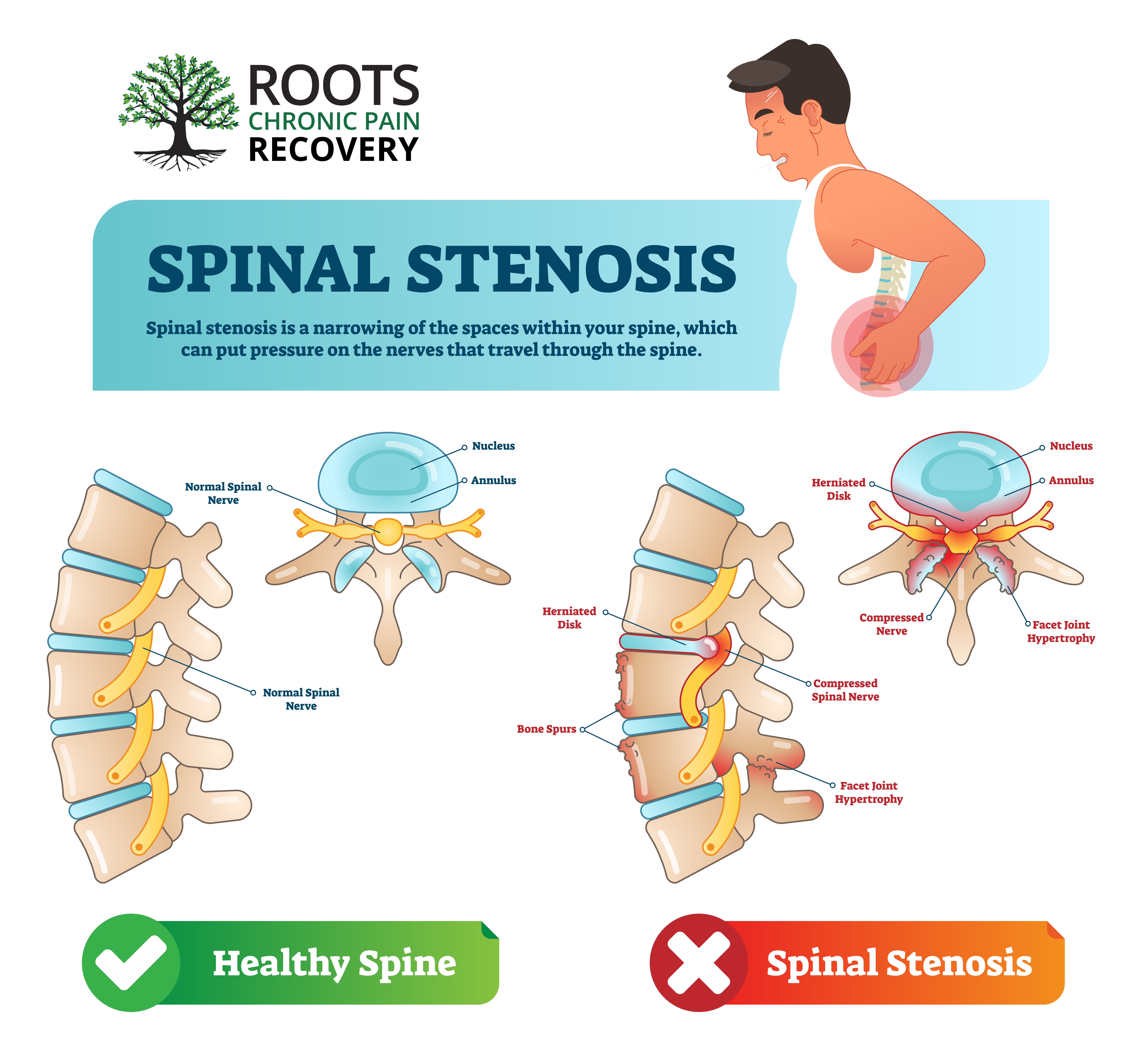
What is spondylolysis
Spondylolysis is a weakness or stress fracture of the spine, in particular the articular processes. The articular processes are part of the ventral bone and are a bridge connecting the upper and lower facet joints of the vertebrae. Spondylolysis in the lower spine, also known as the lumbar. A fracture/weakening of the pars Articularis can lead to anterior displacement of the vertebrae and disruption of their position in the spinal column.
Spondylolysis usually affects the younger population. Repetitive stress on the spine, heavy lifting, or participation in some sports that can cause repetitive injury, such as gymnastics and football, are the most common causes of spondylolysis. Spondylolysis and spondylosis may be related as spondylosis causes weakness in the spine and if left untreated it can lead to injury leading to spondylolysis.
Symptoms of spondylosis versus spondylolysis
The most common symptom of both spondylosis and spondylolysis is back pain.
The symptoms of spondylosis often begin mildly and get worse over time, or may get worse very suddenly. Stiffness and pain are often felt, especially after prolonged sitting. The pain may radiate down the shoulder blades and into the upper arms. More serious symptoms of spondylosis are muscle weakness, muscle spasms, headaches, loss of balance, loss of bladder control.
Mild spondylolysis may cause no symptoms or only mild symptoms. Sometimes spondylolysis is detected by x-ray without any symptoms. In more severe cases, people may experience more severe pain, which may prevent normal movement and function. Some common symptoms of spondylolysis are lower back pain and stiffness, sciatica, and leg pain when walking.
Risk factors for spondylosis versus spondylolysis
Spondylosis most often occurs as a result of aging and wear of the spine. One of the risk factors for spondylosis is genetic predisposition. In women over 40 years of age, bone density may decrease, which may predispose to spondylosis. Another risk factor for spondylosis is a sedentary lifestyle and obesity. In addition, repeated carrying of weights is a risk of developing spondylosis.
Another risk factor for spondylosis is a sedentary lifestyle and obesity. In addition, repeated carrying of weights is a risk of developing spondylosis.
Spondylolysis commonly affects young adults and adolescents, especially those involved in contact sports, putting them at risk for such stress fractures. One of the risk factors is sudden rapid growth, especially during adolescence, tight hamstrings, chronic back strain, and some genetic predispositions.
Treatment of spondylosis versus spondylolysis
Treatment of spondylosis depends on the severity of symptoms. One treatment for spondylosis is to take over-the-counter pain medications, such as non-steroidal anti-inflammatory drugs, to reduce pain. It is helpful to combine these over-the-counter products with exercise and physical activity to strengthen your back and abdominal muscles. Other home treatments may include using a cervical pillow for cervical spondylosis. For lumbar spondylosis, lumbar supports, such as braces, can help relieve stress on the lumbar spine. You should also always try to maintain good posture when standing and sitting.
You should also always try to maintain good posture when standing and sitting.
Yoga can help manage the symptoms of spondylosis. Yoga can help relieve pain, strengthen the spine, and relieve pressure on the spinal cord and spinal nerves. In particular, cobra pose, child pose, and cat pose can help people with spondylosis. Other conservative treatments for spondylosis include physical therapy, massage, and acupuncture.
Epidural steroid injections can help people with a herniated disc, a common complication of spondylosis. For severe forms of spondylosis, surgical treatments are used, including fusion of the vertebrae and laminectomy, which relieves pressure on the spinal nerves, or disc replacement.
Treatment of spondylolysis may be similar to that of spondylosis. Usually, the first treatment for spondylolysis is rest and avoiding high-intensity exercise or sports. People can take over-the-counter pain medication for spondylolysis and a lumbar brace for lumbar spondylolysis. Physiotherapy treatment is often aimed at strengthening the muscles. Gentle home exercises that don’t stress the spine can also be helpful. Other treatment options include acupuncture and massage. In spondylolysis, fusion surgery may be performed if a vertebra is slipping forward due to a stress fracture.
Physiotherapy treatment is often aimed at strengthening the muscles. Gentle home exercises that don’t stress the spine can also be helpful. Other treatment options include acupuncture and massage. In spondylolysis, fusion surgery may be performed if a vertebra is slipping forward due to a stress fracture.
Frequently Asked Questions: Spondylosis and spondylolysis
How are spondylosis and spondylolysis diagnosed?
- A doctor can diagnose spondylosis based on a physical exam and related symptoms. The doctor may also take an X-ray, which will show bone spurs or reduced disc height, or possibly use a CT or MRI to look at the surrounding tissue.
- A doctor diagnoses spondylolysis using an x-ray, MRI, CT, or nuclear medicine bone scan.
What happens if spondylosis or spondylolysis is left untreated?
- If you have spondylosis or spondylolysis, it is important to see a doctor, because without proper treatment, symptoms may worsen.
 Especially with spondylolysis, it is important to seek treatment to prevent future spinal injury.
Especially with spondylolysis, it is important to seek treatment to prevent future spinal injury.
Can physiotherapy help with spondylosis and spondylolysis?
- Physical therapy can help improve range of motion, flexibility and strength. This can help reduce pain and improve functionality. Physical therapy can also help prevent further injury by addressing any underlying issues that may be contributing to the disease.
ANAHANA PHYSICAL HEALTH RESOURCES
PHYSICAL HEALTH WIKI
Fight or Flight Response
Sleep Hygiene
Guided Meditation I am for sleep
Neuroplasticity
PHYSICAL HEALTH BLOGS
What is the nervous system
What is central nervous system
What is the vagus nerve
What is the peripheral nervous system
What is the somatic nervous system
What is the Autonomic Nervous System
What is Spinal Stenosis
What is the Sympathetic Nervous System
What is Back Spasms
What is Diverticulitis
Benefits of Cold Showers
What is the circulatory system
Spondylosis and spondylolysis
Links
Spondylosis (cervical) – Symptoms and causes | Penn Medicine
Spondylosis and Spondylolysis: What’s the Difference?
Degenerative disc disease | Johns Hopkins Medicine
Spondylosis: Causes, risk factors and symptoms
Spondylolysis and spondylolisthesis | Cincinnati, OH Mayfield Brain & Spine
Spondylolysis – Physiopedia
Degenerative Disc Disease: Symptoms, Causes, Diagnosis, Treatment
Cervical Spondylosis – Physiopedia
Spondylosis Center – Osteoarthritis – Symptoms Exercise Spinal Treatment
How yoga can help spondylosis pain – Times of India
What is Spondylosis Deformans? Spondylarthrosis? Spondylolisthesis?
Departments and centers
Methods of treatment
Methods of diagnosis
Diseases and symptoms
These questions may arise in a patient after performing magnetic resonance imaging (MRI) of the spine. In the conclusion of MRI, these terms are often heard. Are these conditions independent diseases and why are they dangerous?
In the conclusion of MRI, these terms are often heard. Are these conditions independent diseases and why are they dangerous?
Deforming spondylosis usually accompanies osteochondrosis of the spine and is manifested by calcification of the edges of the intervertebral discs and the formation of bone outgrowths (osteophytes) along the edges of the vertebral bodies. This is the age-related process of “aging” of the spinal column. For many years it proceeds without symptoms. Progression leads to limited mobility and intermittent pain in the neck, interscapular region and lower back. Large osteophytes put pressure on the nerve fibers and vessels of the spinal column, which is manifested by “lumbago” in the back, girdle pain in the chest, dizziness and headache.
Spondyloarthrosis is a chronic inflammation of the small “facet” joints of the spine. A characteristic manifestation is back pain during active physical activity: tilt, extension and rotation of the body. Often, spondyloarthrosis is accompanied by thickening (hypertrophy) of the yellow ligaments between the vertebrae. Hypertrophy of the yellow ligaments and arthrosis of the “facet” joint leads to narrowing of the spinal canal and intervertebral foramen. There are symptoms of compression of the spinal nerve root (as with a herniated disc): pain that radiates to the arm, leg, a feeling of “needles, goosebumps”, decreased sensitivity and strength of the fingers and toes.
Often, spondyloarthrosis is accompanied by thickening (hypertrophy) of the yellow ligaments between the vertebrae. Hypertrophy of the yellow ligaments and arthrosis of the “facet” joint leads to narrowing of the spinal canal and intervertebral foramen. There are symptoms of compression of the spinal nerve root (as with a herniated disc): pain that radiates to the arm, leg, a feeling of “needles, goosebumps”, decreased sensitivity and strength of the fingers and toes.
Spondylolisthesis – displacement (slipping) of a vertebra relative to the underlying vertebra. The main reason: the inability of the ligaments of the spine to hold adjacent vertebrae on top of each other (instability of the spinal motion segment). Spondylolisthesis can be the result of trauma or damage to the spine during heavy physical or sports activities. Congenital listhesis is formed with dysplasia (impaired development of the vertebrae) in childhood; age-related, involutive against the background of the progression of osteoporosis, osteochondrosis and intervertebral hernias. There are anterior (antelisthesis), posterior (retrolisthesis) and lateral displacement. The patient is troubled by sharp pain in the back when bending slightly, for example, “wedging the back” when bending over the sink while washing. Other characteristic symptoms: a decrease in strength and sensitivity in the legs, are associated with compression of the roots and spinal cord in severe spondylolisthesis. When viewed at the place of displacement of the vertebra, there may be a “step”, a depression. Displacement of the vertebrae leads to deformation of the spinal column, narrowing of the spinal canal and requires mandatory consultation with a vertebrologist or orthopedist.
There are anterior (antelisthesis), posterior (retrolisthesis) and lateral displacement. The patient is troubled by sharp pain in the back when bending slightly, for example, “wedging the back” when bending over the sink while washing. Other characteristic symptoms: a decrease in strength and sensitivity in the legs, are associated with compression of the roots and spinal cord in severe spondylolisthesis. When viewed at the place of displacement of the vertebra, there may be a “step”, a depression. Displacement of the vertebrae leads to deformation of the spinal column, narrowing of the spinal canal and requires mandatory consultation with a vertebrologist or orthopedist.
The main methods for diagnosing spondylosis and spondylolisthesis are spinal radiography, magnetic resonance imaging (MRI) and computed tomography (CT). Osteoporosis is diagnosed by ultrasonic and X-ray densitometry, determining the level of calcium and vitamin D3 in the blood. Electromyography (EMG) will allow you to assess the conduction and degree of compression of the roots and nerves of the extremities.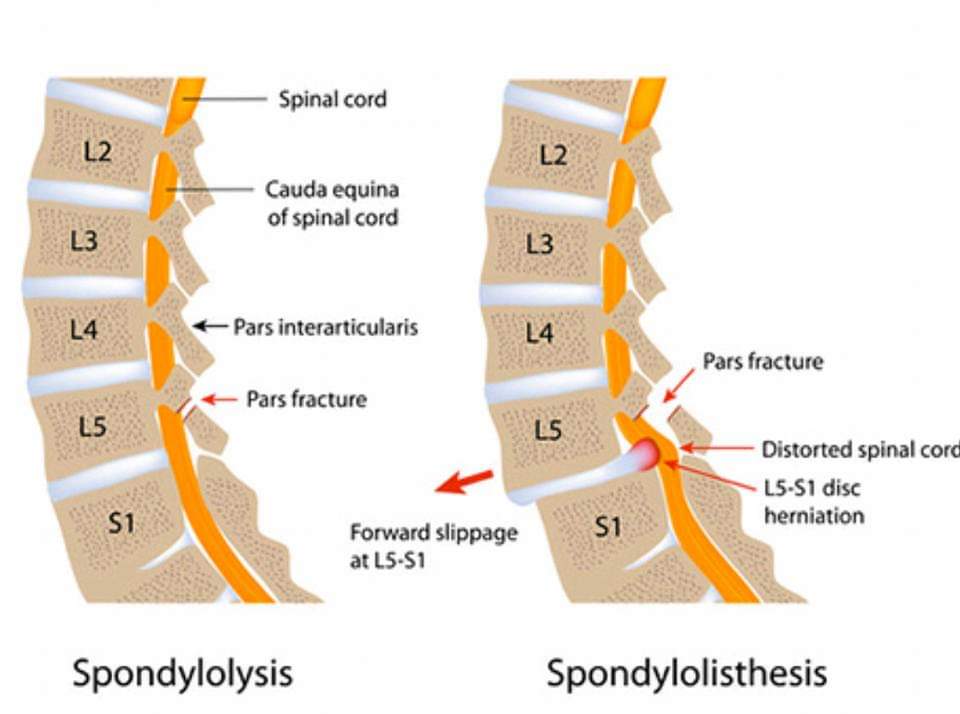
Treatment of Spondylosis and Spondylarthrosis in Samara
The treatment is aimed at reducing pain in the spine, relaxing the back muscles, and as a result, increasing the range of active movements. Complex therapy includes non-steroidal anti-inflammatory drugs, muscle relaxants, chondroprotectors. In order to improve blood flow in the basin of the vertebral arteries and facilitate venous outflow from the spine, mesoinjection therapy is used. If osteoporosis is detected, the doctor will prescribe vitamin D3 and calcium preparations, as well as stimulants for the formation of bone tissue.
For quick relief of pain, it is important to prescribe hardware high-tech techniques. The use of shock wave therapy is aimed at reducing muscle spasm and inflammation of the “facet” joints, improving the blood supply to the spine and restoring the bone structure of damaged vertebrae. Peripheral magnetic stimulation “evens out” muscle tone in the epicenter of pain, stimulates blood circulation and conduction through the peripheral nerves of the back and limbs. Another method of magnetic stimulation is also actively used on the magnetotherapeutic complex “Multimag”. Its action helps to restore damaged joints of the spine and reduce inflammation in them, soothes and relaxes the muscles of the back, stimulates the functions of the brain and spinal cord. To improve the trophism of the nerves and the musculoskeletal system of the spinal column, Khivamat therapy is prescribed. Electrostatic pulses create deeply penetrating vibrations in the tissues, which leads to effective pain relief and a decrease in inflammation in the joints of the spine, improving lymphatic and venous drainage of the tissues of the back.
Another method of magnetic stimulation is also actively used on the magnetotherapeutic complex “Multimag”. Its action helps to restore damaged joints of the spine and reduce inflammation in them, soothes and relaxes the muscles of the back, stimulates the functions of the brain and spinal cord. To improve the trophism of the nerves and the musculoskeletal system of the spinal column, Khivamat therapy is prescribed. Electrostatic pulses create deeply penetrating vibrations in the tissues, which leads to effective pain relief and a decrease in inflammation in the joints of the spine, improving lymphatic and venous drainage of the tissues of the back.
In the treatment of spondylolisthesis, in addition to medical and physiotherapeutic methods, orthopedic corsets are used that fix the spine and limit instability between the vertebrae. With increased displacement of the vertebrae and the appearance of neurological symptoms (decreased strength and sensitivity in the legs, urinary incontinence, change in gait), surgical treatment is indicated: immobilization of 2-3 adjacent vertebrae (spondylodesis).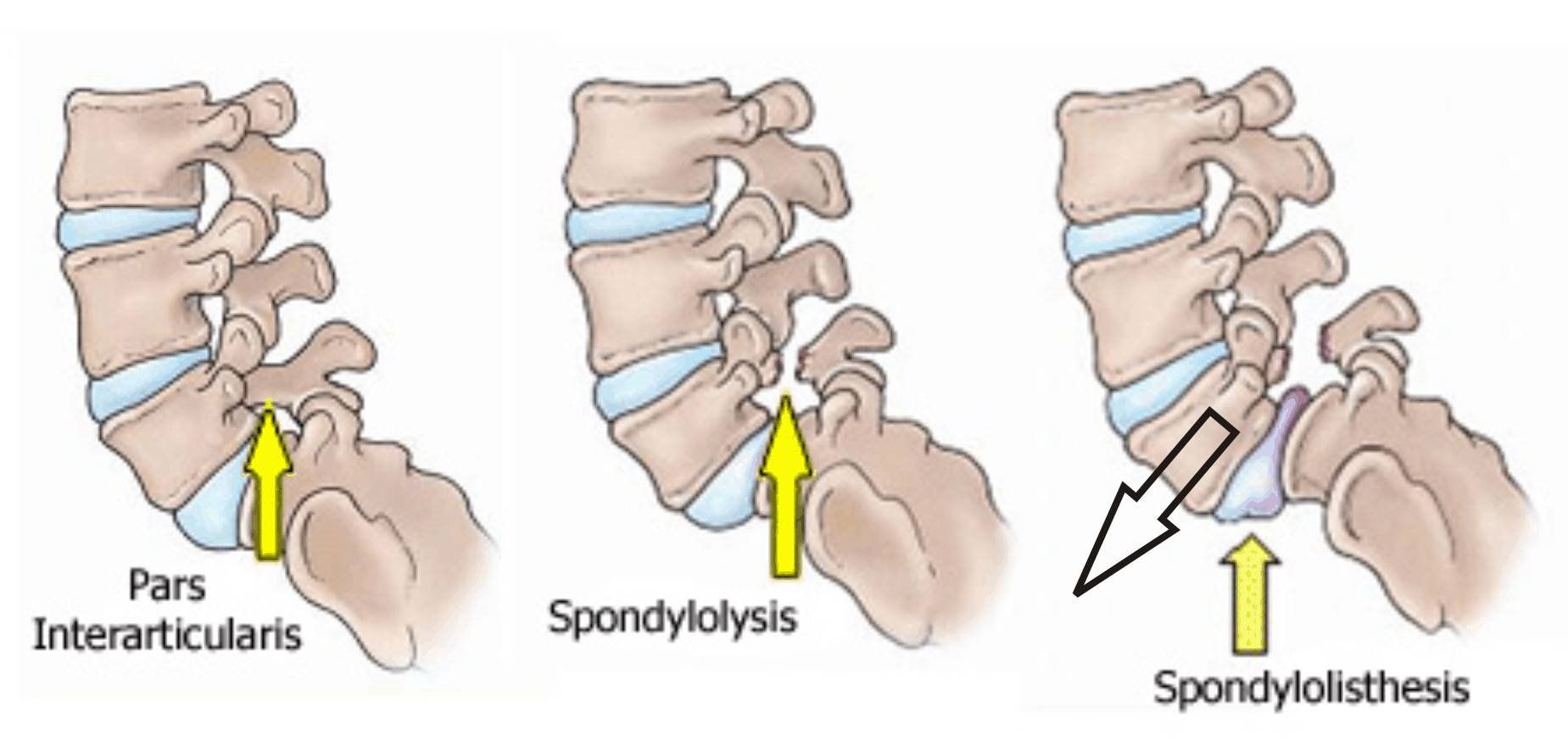
It is important to note that all 3 pathological processes (spondylosis, spondyloarthrosis, spondylolisthesis) develop very slowly. Initially, they do not have characteristic symptoms, manifesting themselves only as periodic pain in the back and neck during physical exertion. Often, diagnosis is carried out after the onset of symptoms from the spinal cord and a violation of the musculoskeletal function of the spine. It is necessary not to miss the first “calls” of the disease, to consult a neurologist-vertebrologist and an orthopedist in a timely manner and to conduct an examination of the spine. At the initial stages, these pathologies are amenable to effective treatment using physiotherapy techniques, physiotherapy exercises and posture correction.
Our specialists
Select the desired addressEnthusiasts 265 Proseka 95ABuyanova 12Stara Zagora 142 B
To submit the form, consent to the processing of personal data is required
I agree to the processing of personal data
By checking the box, I give my consent to the processing of my personal data in accordance with law No. 152-FZ “On Personal Data” dated July 27, 2006 and accept the terms of the Policy regarding the processing of personal data
152-FZ “On Personal Data” dated July 27, 2006 and accept the terms of the Policy regarding the processing of personal data
See also
Lumbosciatica
Lumboischialgia is low back pain that is reflected in the buttock, thigh, lower leg, or simultaneously covers the entire lower limb. This is a symptom complex that occurs when there is a disease in the lower back, …
Read more
Cervical spondylarthrosis
The cervical spine includes 7 vertebrae, which, when connected to each other, form movable articular joints (“facets”). Due to the presence of facet joints, between the vertebrae are available …
Read more
Fractures of the spine
The spine is one of the main parts and supporting units of our skeleton, which consists of the vertebral bodies, articular processes, intervertebral discs, and the arch of the vertebra also departs from each section behind …
Read more
Herniated disc and back pain
Herniated disc is a really dangerous and complex disease of the musculoskeletal system, which today is one of the most severe and at the same time very common .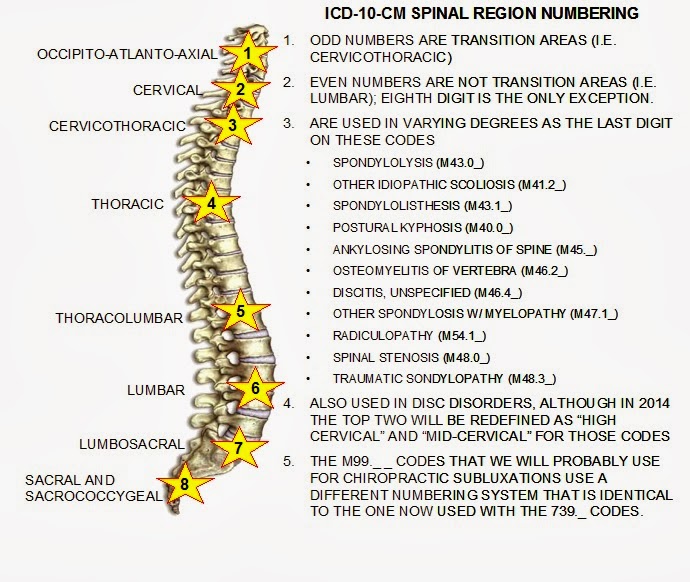

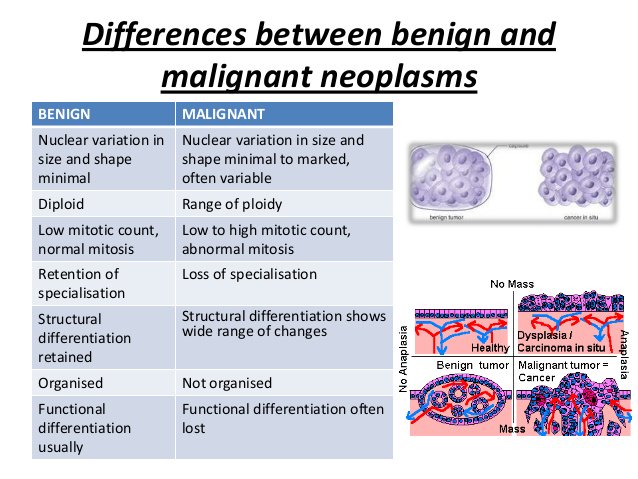 Especially with spondylolysis, it is important to seek treatment to prevent future spinal injury.
Especially with spondylolysis, it is important to seek treatment to prevent future spinal injury.